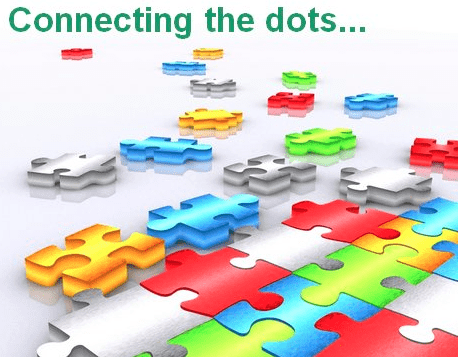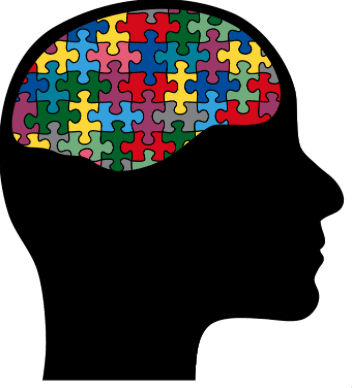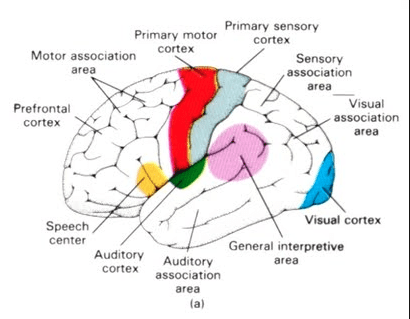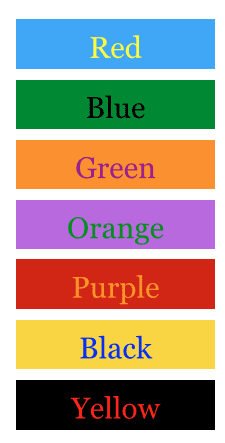 This series is focused on the seemingly insane things that first responders do while operating in high-stress, high-consequence environments. Oftentimes, those trying to make sense of these behaviors are quick to judge the participants, saying things like: “How could they be so stupid?” or “What were they thinking?” or perhaps the worst one of all “I would never do something so dumb!”
This series is focused on the seemingly insane things that first responders do while operating in high-stress, high-consequence environments. Oftentimes, those trying to make sense of these behaviors are quick to judge the participants, saying things like: “How could they be so stupid?” or “What were they thinking?” or perhaps the worst one of all “I would never do something so dumb!”
Could it be the responders didn’t understand they were in a bad spot? Lessons in neuroscience would affirm this not only can happen, but it does happen and more often than we would wish. Let’s explore the challenge of comprehension.
Comprehension
 To comprehend is to understand. In order to understand, one must make sense out of what is happening in the moment. To make sense out of what is happening, one must gather information and process that information into a coherent meaning.
To comprehend is to understand. In order to understand, one must make sense out of what is happening in the moment. To make sense out of what is happening, one must gather information and process that information into a coherent meaning.
When done successfully, and accurately, it could be said that the person had good comprehension. When comprehension is flawed, it can lead to poor decision-making and result in the seemingly dumb things first responders are so harshly judged for by their peers.
How You Comprehend
In the minds of some people, the process of comprehension seems so simple. See…and comprehend. Hear…and comprehend. This is what leads some people to think situational awareness is simply “paying attention.” The truth of the matter is, comprehension is far more complex than most understand it to be and far more challenging than many wish it to be.
 Before you can comprehend anything, you need sensory inputs. These inputs come into the brain in the form of electrical impulses from the sensory organs. Seeing, hearing, feeling, tasting, and smelling are the inputs. The electrical impulses from the various sensory organs are routed to their respective processors in the brain. The inputs are evaluated by each processor and then sent onward to higher regions of the brain where they are compared and contrasted to develop understanding – comprehension.
Before you can comprehend anything, you need sensory inputs. These inputs come into the brain in the form of electrical impulses from the sensory organs. Seeing, hearing, feeling, tasting, and smelling are the inputs. The electrical impulses from the various sensory organs are routed to their respective processors in the brain. The inputs are evaluated by each processor and then sent onward to higher regions of the brain where they are compared and contrasted to develop understanding – comprehension.
When the inputs are congruent (i.e., compatible), comprehension can be quick and accurate. This is aided by past experiences because part of the process of comprehending comes from answering questions like:
Have I experienced this before?
Am I familiar with this input?
What have I understood this input to mean to me in the past?
Was I right or wrong in my previous assessments of this input?
What were the benefits or consequences of my being right or wrong in the past?
What did I learn from previous experience?
Your past experiences, most of which reside outside your conscious awareness, play heavily in your comprehension of current events.
Comprehension Gone Horribly Wrong
 No one sets out to misunderstand what is happening while working in a high-risk, high-consequence environment. Yet it happens…a lot! Can someone look at something and not understand the meaning of what they’re seeing? Yes! Can someone hear something and not understand the meaning of what they hearing? Yes! It doesn’t take a stressful environment for this to happen. But stress, coupled with the perception of consequence, compounded by the compression of time and a sense of urgency to act, can accelerate your need to comprehend. This speeding up can lead the brain to take shortcuts.
No one sets out to misunderstand what is happening while working in a high-risk, high-consequence environment. Yet it happens…a lot! Can someone look at something and not understand the meaning of what they’re seeing? Yes! Can someone hear something and not understand the meaning of what they hearing? Yes! It doesn’t take a stressful environment for this to happen. But stress, coupled with the perception of consequence, compounded by the compression of time and a sense of urgency to act, can accelerate your need to comprehend. This speeding up can lead the brain to take shortcuts.
These shortcuts, termed “heuristics” are the brain’s way of trying to help you survive in a perceived hostile situation by taking limited amounts of information and, for lack of a better metaphor, jumping to conclusions. The good news is your brain is pretty good at this task. If it wasn’t, we’d probably be extinct as a species.
The more stress you’re under, the more heuristics may guide your assessment of the situation and influence your decision-making. The problem is, while your brain is very good at making quick assessments and applying these “rules of thumb” to guide your decision-making, it is not flawless. It compares current inputs to past experiences and, with lightening speed, guides you to some form of comprehension. When it’s right, you accurately comprehend. When it’s wrong, you misunderstand. The problem is, you may not know whether you comprehend or not until after your decision is made and the outcome is revealed.
Sensory Integration
Your brain is an amazing organ. It can take electrical impulses from all five sensory organs, slice them, dice them, reassemble them, compare them, and contrast them into understanding in less time than it takes you to blink your eyes. When the inputs are compatible, comprehension is expedited. For example, when you see an onion, smell an onion, taste an onion, and your eyes water, there is little doubt in your mind that you are in the presence of an onion. Your brain takes all the inputs, assesses them, determines they are congruent and you comprehend. That is an example of the proverbial “low hanging fruit” (or in this case, vegetable) of comprehension.
 But what might happen in your brain if you simultaneously saw an onion, smelled a lemon, and tasted fish? While this example is exaggerated for effect, similar things can happen when you least expect them…or desire them. Despite advances in neuroscience, we yet, to this day, do not understand how the senses are able to integrate, assemble, and comprehend it all. However, research has shown the integration process can go horribly wrong.
But what might happen in your brain if you simultaneously saw an onion, smelled a lemon, and tasted fish? While this example is exaggerated for effect, similar things can happen when you least expect them…or desire them. Despite advances in neuroscience, we yet, to this day, do not understand how the senses are able to integrate, assemble, and comprehend it all. However, research has shown the integration process can go horribly wrong.
While it may not seem obvious, research has proven that sensory integration (the combining of sensory inputs) in the brain, can produce confusion. You can see something and hear something at the same time and they mean two different things. For example, you may see “A” and at the same time hear “B”. When this happens, the senses have to figure out which sensory input is correct, eyes or ears. Because the visual cortex is the largest of all the sensory processors, you are likely to default to what you see. But that doesn’t mean that vision will always be accurate. It simply means in the brain the visual cortex has the most horsepower (based on size) to influence comprehension.
Confabulation
 Sometimes your brain plays tricks on you. It confabulates the truth. Stated another way, it makes things up that are not true. When the brain is confused from conflicting sensory organ inputs it may confabulate – make up – a comprehension of what is happening, that is, unfortunately, completely imagined. Sometimes when the eyes see “A” and the ears hear “B” the brain will confabulate – make up – its own comprehension of what’s happening, “C”. This was demonstrated by a neurological phenomenon known as the “McGurk Effect.” (For more on the McGurk Effect and to see a video demonstrating it, see SAMatters article: Understanding Stress-Part 6)
Sometimes your brain plays tricks on you. It confabulates the truth. Stated another way, it makes things up that are not true. When the brain is confused from conflicting sensory organ inputs it may confabulate – make up – a comprehension of what is happening, that is, unfortunately, completely imagined. Sometimes when the eyes see “A” and the ears hear “B” the brain will confabulate – make up – its own comprehension of what’s happening, “C”. This was demonstrated by a neurological phenomenon known as the “McGurk Effect.” (For more on the McGurk Effect and to see a video demonstrating it, see SAMatters article: Understanding Stress-Part 6)
Complicating sensory integration, it is possible for you to look at something and, at the same time, have multiple conflicting inputs sent to the visual processor. For example, if you were asked to read and remember a list of seven words, in order, flashed on a screen one at a time, and each word stayed on the screen for 2 seconds. When it was done, you were asked to write down the seven words.
The task could be made easier by integrating two visual inputs that creates congruence in the visual processor. If we did that, the list would look like this:
But what happens when visual inputs are complicated by non-congruent information? Imagine if the list flashed before you read like this:
As you would expect, the task becomes more complex because the eyes are seeing two different things simultaneously. In this example, as you read the word red, your eyes are processing the color yellow. This confuses the brain. Confusion causes sensory integration to become more challenging, as does the accuracy of memory and recall (but that’s a different topic altogether).
Now let’s make the task even more complicated by introducing a third non-congruent sensory input.
Clearly, the task of comprehension becomes more of a challenge as the conflicts among the various inputs increase.
Imagine how the task could be complicated even more if non-congruent smells were introduced – for example, when the word red was flashed, in yellow letters, with a blue background, while the smell of an orange was present.
Suffice it to say, comprehension is a complex neurological process. The problem is that flawed comprehension can lead to poor decision-making. And those poor decisions are then, after the fact, often judged by our peers as being INSANE!
About the Author
Richard B. Gasaway, PhD, CSP is widely considered a trusted authority on human factors, situational awareness and the high-risk decision making processes used in high-stress, high consequence work environments. He served 33 years on the front lines as a firefighter, EMT-Paramedic, company officer, training officer, fire chief and emergency incident commander. His doctoral research included the study of cognitive neuroscience to understand how human factors flaw situational awareness and impact high-risk decision making.
_____________________________________________________

If you are interested in taking your understanding of situational awareness and high-risk decision making to a higher level, check out the Situational Awareness Matters Online Academy.
CLICK HERE for details, enrollment options and pricing.
__________________________________
Share your comments on this article in the “Leave a Reply” box below. If you want to send me incident pictures, videos or have an idea you’d like me to research and write about, contact me. I really enjoy getting feedback and supportive messages from fellow first responders. It gives me the energy to work harder for you.
Let’s Get connected
Facebook: SAMatters
LinkedIn: Rich Gasaway
LinkedIn: Situational Awareness Matters
Twitter: Rich Gasaway
Youtube: SAMattersTV
itunes: SAMatters Radio
Stitcher Radio: SAMatters Radio
Google Play: SAMatters Radio
iHeart Radio: SAMatters Radio




